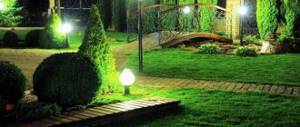Street lighting today is important in the life of every person. Thanks to poles and overpasses with lamps, optical visibility is significantly increased at times of day when it is already dark.
Moreover, street lighting lamps must be installed both in small city courtyards and on wide avenues of megacities. Both vehicle drivers and pedestrians, moving around the city at night should be equally comfortable moving around in any part of the city.
More recently, there was absolutely no diversity among the night guards who would show the right path, but everything has changed in the last few years. The area of influence of street lights is not limited to sidewalks and roads.
Today, even billboards with advertising or house facades can easily become active participants in a rather spectacular process of transforming the appearance of the surrounding space.
When considering options for street lighting, many choose LED lamps, when purchasing which you need to pay attention to such an important indicator as the period of use.
You must understand that their installation in any case will require the use of special equipment and will be quite complicated.
Evening landscape lighting: what is important to know
The lamps used must have a high degree of protection, that is, be outdoors. It's intuitive. It is impossible to provide good landscape illumination with structures that are widely used in interior design that are not protected from moisture, dirt and other natural influences. They are simply not designed for this. Garden lamps have a slightly different design and markings, indicating that the product can be used outdoors. The optimal level of protection is considered to be IP65.
Street lights must have a high degree of protection
Purpose of outdoor country lamps
Modern technologies used in the manufacture of street lamps for a country house are designed to provide functional, decorative, and sometimes security lighting:
- Functional. Serves for safe movement around the garden at night. Lighting is placed along paths, next to stairs and bridges. Objects that are frequently used at night should be well lit. This type of lighting must meet the most stringent safety requirements, be durable and easy to use. Such lanterns are used year-round, so they must be made of frost-resistant material. The main sources are lamps on poles and walls. Many people prefer lawn lamps; they do not dazzle, but open up the outline of the path, stairs, and fit perfectly into the garden design.
- Decorative. It has one goal - decorative decoration of the site, creating accents in the most significant and attractive places of the garden plot. Properly placed lighting can change flower beds, rock gardens, fountains, and ponds beyond recognition. Glowing pots and vases made of plastic, stones, and decorative garden figures placed on the lawn can decorate even the most ordinary landscape.
- Security. A well-lit area, without a single shaded area, deters thieves. Security lighting is installed around the perimeter of the site using hidden video surveillance. The development of such projects is carried out by professionals.
All these functions are easily combined into one. This allows summer residents to arrange their private properties taking into account comfort and safety.
How are street lighting lanterns classified?
Landscape lamps are divided according to their functionality. Some are designed to supply basic light, others for decorative light. Elements that fall into the first category are the basis of outdoor lighting. The directed light fluxes emitted by floodlights provide illumination of the perimeter of the site and the surrounding area.
Functional lamps
The components of the second group are responsible for the comfort of movement around the site, provide comfort and serve as an additional decoration of the landscape. When they are correctly integrated into the garden style, decorative lamps for the garden often become leading elements of the design of the territory.
Decorative lamps
Decorative lighting also has a group division. This includes:
1. Architectural lighting.
2. Emergency lighting.
3. Underwater lighting.
4. Landscape lighting.
5. Purely decorative lighting.
The first type is used when it is necessary to highlight the facades of buildings and small architectural forms. The second is relevant when illuminating paths and entrances to the house. The third is to decorate water bodies. Fourth, they place accents on the site. And the last type of lighting simply decorates individual objects or areas, without carrying any specific functional load.
Landscape lighting
Duty group
The main task of representatives of this category is to illuminate garden paths, approaches to the garage and house, and porch. This is not so much a question of decorativeness as of safety of movement in the dark. In this aspect, the optimal solution would be to install street lighting lamps that provide reflected light. The entrance to the house and the gate are often equipped with powerful light sources with reflectors and motion sensors.
Illumination of the garden path and entrance area
But on garden paths such power is not required. In transit areas, so-called path lights are installed. The light they emit is always directed straight down. It does not hit the eyes and clearly draws the illuminated area, which makes moving along paths in the dark as comfortable as possible. Modern models of path-type garden lamps also have built-in motion sensors. This allows you to save resources, since the light turns on only when a moving object appears on the track.
Path lights with motion sensor
The sliding lighting technique is becoming increasingly popular. It's like a chain reaction. When you turn on each subsequent flashlight, the previous one goes out automatically. There is a magical effect of mirage paths that appear and disappear as if by magic. Small paths will look more impressive in the design of fiber optic broaches. Bottom soil illumination lamps are also relevant in the garden.
Bottom garden lighting
Spatial lighting
With the help of representatives of this group, the night garden is given depth. The effect ensures multi-level illumination and adequate placement of lamps. The areas adjacent to the house are illuminated more softly and less intensely, which creates the effect of depth in the remaining garden space. The exact opposite technique can also be used. This lighting scheme is used when it is necessary to make a long and narrow garden area appear more comfortable and compact.
Multi-level garden lighting
To increase the effect, you need to use those garden lamps whose design includes an anti-glare screen and the ability to adjust the shape of the light beam.
Lighting of extensions and utility yard
A good owner always has chores going on near his country house. To prevent debris and dirt from being spread around the area, the work area is usually separated by a fence. This territory is called a utility yard, which can be either permanent or temporary. In any case, it should always be well lit in the evening. The most suitable street lamps for this are floodlights ; an example of them can be seen in the photo.
Mounted lanterns on the wall of a building or on a special support, they provide good illumination for several meters ahead. In addition, the natural color of the object is not distorted. For a rectangular-shaped utility yard, four lanterns with a metal halide spotlight with a power of 70 W are enough. Due to the fact that street lamps have an excellent degree of protection, they can be used for quite a long time.
To turn lights on/off, you need to install single-pole or double-pole switches that control each light separately or all of them simultaneously.
Street lights: economic issues
The main savings in garden lighting design occur through the use of a low-voltage power supply system. The advantages of such a solution are obvious. Although the initial investment will be quite large, it will quickly pay off in the future. Again, it's a safety issue. A voltage of 12 V cannot cause harm to health. The electrical wiring will not need to be laid at great depth, which will allow it to be quickly reinstalled if necessary.
Lay electrical wiring at a shallow depth
Among the disadvantages, it should be noted the need to use a step-down transformer when connecting lamps in the garden, the acquisition of which will require financial investments, and special low-voltage halogen or LED light bulbs.
Low voltage halogen lamp
A standard 220V system will require strict compliance with the regulatory rules of its organization. Here it will not be enough to hide the armored cable in a corrugated pipe. All this will have to be laid on a sand cushion in a groove 70 centimeters deep, and on top the location of the wires will be marked with a special signal tape. It is necessary to install powerful circuit breakers on the panel that will be able to withstand the load from the mass of burning street lights and allow them to be instantly de-energized in the event of an emergency. The advantage of using standard wiring is the ability to install lamps of any type and power in lanterns.
Laying electrical wiring in the soil
For the southern regions, where there is plenty of sunlight, the use of garden lamps that operate without any electrical power is justified. We are talking about solar energy batteries. The variety of design designs will make it easy to fit them into even the most complex landscape. They are successful in central exposures, in illuminating paths, and in illuminating vegetation. The main advantages of this solution include complete autonomy and mobility of street lighting lamps. The lack of a network connection allows you to freely move devices around the site, changing their composition depending on the situation. Such lamps are especially convenient for arranging the landscapes of summer cottages for seasonal use. It will not be difficult to collect them at the end of summer and store them in the barn or attic.
Solar-powered lamps will fit into any landscape
The devices do not require human supervision. You don't need to turn them on or off. The lamps perform these operations automatically. The intensity of the light flux increases in direct proportion to the degree of darkening. With dawn, the process happens exactly the opposite. The light emitted loses its brightness and turns off as the sun rises. The assortment of solar-powered garden lamps is quite large. Here you can find:
- lanterns;
- floor lamps;
- suspended spherical structures;
- glowing decorations.
Solar pendant light
Garden lamps, in contrast to park street lighting models, have a more interesting and less formal design. They can be used quite successfully both in solo form and as part of landscape compositions. Park lamps are more relevant for illuminating lawns, alleys, shrubs in public gardens and in decorating large garden areas.
Park lamps
Types of Landscape Lanterns
A large selection of street lamp models allows you to choose them for any garden area. Types of lamps for a summer house or country house:
- Spotlights. These lamps are characterized by high power and directional flow of light. They are used for zoning areas, lighting various garden objects, and building facades. Large floodlights are installed on the territory of industrial enterprises, stadiums, and car parks.
- Columns (bollards). Low power devices, made in the form of columns. They are installed along the edges of access roads and sidewalks, illuminating an area of 1 m. Bollards are equipped primarily with lamps of a neutral or warm spectrum; cold glow is rarely used in special design projects.
- Built-in. Installed as marking lighting to highlight decorative platforms, stairs, and floors in gazebos. Mounted directly into steps, floor, ground. There are enough lamps of low power that will indicate the contours of objects. Recently, the most important landscape compositions, powerful tree trunks, have been highlighted with recessed lamps.
- Ground. The most budget option of all lighting devices. They are used to illuminate architectural and landscape objects: pedestrian areas, sidewalks, curbs, monuments. Installed in soil, asphalt, concrete pavement, paving slabs on personal plots and urban infrastructure facilities.
- Sconces (wall). They are mounted on the wall using a bracket to which a lampshade or lampshade is attached. Typically, these models have interesting designs and varied designs. This allows you to choose them for the decorative design of an area of any style.
- Underwater. Decorative lighting for swimming pools and artificial reservoirs. The lighting is built into the bottom or walls of the pool, is corrosion resistant and waterproof.
- Floating. Ball-shaped waterproof lanterns floating on the surface of a reservoir. They perform a decorative function, do not require installation, and move freely along the water surface.
It is necessary that lighting be as efficient as possible with minimal electrical energy consumption and be safe to use.
What type of lamps is best to equip garden lamps
The main approximate characteristic is the adequacy of the ratio of the emitted light flux and power consumption. In this aspect, conventional incandescent lamps are much inferior to their more modern relatives. And it’s not just that such lamps throw out too much light. When in use, they heat up quickly and intensely and can burn plants. It is also impossible not to mention the short life of their operation. They will have to be changed quite often, so it is better not to install incandescent lamps in high street lamps or in lamps located in hard-to-reach places. On the other hand, none of the lamps known today provide a more “lively” and warmer light. It's very cozy with this lighting. This is especially felt on cool evenings. Another advantage of this type of lighting elements is their insensitivity to frost. They work without interruption.
Incandescent lamps provide a “lively” and warm light
Halogen lamps can be a worthy alternative to incandescent lamps. They are compact and provide bright light.
Fluorescent lamps are economical, provide a powerful luminous flux, have a wide color range, but do not light up immediately. They need time to accelerate. In addition, the lamp is not safe, since its design contains mercury. This means that it can only be installed in street lighting fixtures in which it cannot break.
Fluorescent lamps provide powerful light
LED garden lights have the same advantages as fluorescent lights, but without their inherent disadvantages. The LED lamp lights up instantly and does not contain toxic inclusions. However, only expensive specimens are this good. Cheap types will flicker and give off an uncomfortable light, so don't be fooled by the advertising on the packaging.
Recommendations for choosing models
When purchasing lanterns for a dacha or country house, you should not save money at the expense of quality. These devices are used in outdoor conditions, so it is necessary to choose models that are protected from dust, moisture, and resistant to changing weather conditions.
It is necessary to decide on the design of the device; it must correspond to the surrounding landscape . When choosing the type of lighting, it is more advisable to purchase LED models, which consume much less electricity than incandescent lamps. The high cost of LEDs will quickly pay for itself. You can choose a model with a more convenient control method, equipped with a motion sensor .
The body of street lamps for a dacha must be made of durable material, because they will be used in all weather conditions. Lanterns made of cast iron, steel, and non-ferrous metals are durable and can withstand the most extreme conditions.
Ceramic lamps also have a durable body and socket; they are also popular in garden decoration.
Lighting at the dacha not only serves its main function, but also works to decorate the area . Mobile models are used that can be moved and installed anywhere in the garden. All devices must fit organically into the surrounding landscape.
Selection of lamps for the garden landscape
Each zone will need lighting fixtures of the appropriate type and design. Everything will be important:
- power;
- lighting angle;
- light concentration;
- direction of light flow.
If it is necessary to provide light to large areas, full-length street lighting lamps with a powerful, high-mounted spotlight will be required. They are placed so that the radii of their light output intersect. This way you will avoid unlit corners. It would not be correct to provide overhead lighting for the entire area of the site. The garden will immediately become uncomfortable, and the bright light can irritate the neighbors.
Street lights provide light to large areas
To highlight the beauty of a night garden, use light lines and accent spots. You can add volume and depth to this landscape.
Lighting can add depth to your garden
Facade lighting should not be ignored. This move simultaneously focuses attention on the architectural delights of the house and highlights the surrounding area.
In fact, decorative lighting is always a “two in one” option. In small areas, sometimes it is enough to place garden lamps near a few bushes - this is enough to illuminate the entire dacha.
For a small area, several light sources are enough
An important point in creating landscape lighting will be the choice of adequate quality lighting objects. For example, garden paths require diffused and gentle light that will evenly cover their area. The height of the lighting structures and the pitch distance between the circuit elements will be determined by the architecture of the garden alley, its surroundings and the lighting angle characteristic of the model of the selected type of lamp.
Ambient light is required to illuminate paths
It is necessary to take into account the climatic features of the area. It is not rational to install built-in lighting for paths where everything is covered with snow in winter. Light radiation will not penetrate the thickness of snowdrifts and ice. That is why, in our climate, column-shaped structures with a height of 30–60 cm are considered the optimal lamps for decorating garden paths. Paths decorated with them will look doubly impressive if flower beds are laid out along them.
Columns more than 60 cm high will illuminate paths even in winter
Decorative lighting
“When choosing the design of street lighting lamps, we must not forget that they are destined to be more than just light sources: in the daytime, the devices will have to decorate the landscape with their appearance.”
The process of its creation is similar to the birth of a painting, only instead of a brush and paints, here the strokes are made in beams, dots and stripes of light. Making your garden look spectacular with street lights is not that difficult. You can focus on one thing. The object of desire is often a spreading tree or a group of bushes. The first option uses a spotlight with a narrow beam with a not too bright lamp. It will not illuminate the shadow and kill the texture of the garden. Not the entire tree can be illuminated. Sometimes it is enough to highlight its trunk or crown. In the case of bushes, it is better to use a widely scattered light stream, as if hugging them.
Illumination of free-standing trees in the garden
Where to place the light source depends on the desired effect. If it is necessary to emphasize the contours of an object, then street lamps are placed behind it. If you want to add spots of color to a dark landscape, garden lamps are placed in front of the selected exposure. Topiary forms are incredibly impressive in the backlight. By lighting them, you will create an emphasis on the beauty of garden architecture.
Light accents in the garden
If there are ponds, streams, or swimming pools in the landscape, they should also be included in the list of objects to be decorated with light. They will add magic to the atmosphere, plus they will be clearly visible, which is already good purely for security reasons.
Illumination of the pond will add magic to the atmosphere
When choosing the design of street lighting lanterns, we must not forget that they are destined to be more than just light sources: in the daytime, the devices will have to decorate the landscape with their appearance. Take something that matches the stylistic design of the house and the adjacent area with its exterior, then you are guaranteed to be satisfied!
Street lighting should be in harmony with the landscape of the site
A lot or little light in the country - which is better?
At the planning stage of garden arrangement, you immediately need to think about future lighting. The use of light accents, the designation of paths, a pool and a gazebo, as well as a flower bed will require wiring to future light points in advance. However, with the active use of such multiple backlights, an unpleasant surprise may be the bill for electricity consumption.
With a landscape design already created, you can purchase portable battery-powered lights . But they are not without negative qualities. Take, for example, fast discharge in cold weather or low light conditions in rainy conditions.
Therefore, you should pay attention to the subtleties of operation that are important in each specific case.
There are no standards for lighting a garden plot as such. It all depends on the individual characteristics and preferences of the owner of the dacha, as well as the size and configuration of the site. But there are still certain rules for installing lighting fixtures:
- the higher you plan to install the lantern, the more powerful the lighting element of the device should be;
- the lower the power, the more lamps will be needed if good lighting is required.
To save costs on light sources, you can use motion sensors , relays for adjusting the degree of illumination, and additional reflectors. It all depends on the goals and artistic ideas of the author, if any. Illumination of 1-6 Lux is quite sufficient for a comfortable stay on the street in a small garden plot.
Decorative lighting or regular lighting of the dacha area for the safety of being in the fresh air at night will emphasize the features and individuality of each garden plot, allowing you to create or improve the comfort of staying in your green recreation area at any time. The correct placement of light accents will make dark areas attractive, leaving an unforgettable experience from simply contemplating the play of light and shadow.











